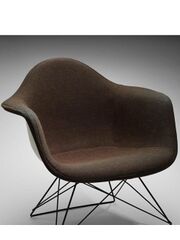Difference between revisions of "Hopsacking"
Jump to navigation
Jump to search
m (Text replace - "== Authority ==" to "== Sources Checked for Data in Record ==") |
|||
| (One intermediate revision by the same user not shown) | |||
| Line 1: | Line 1: | ||
| + | [[File:Hopsacking chair mfa.jpg|thumb|Hopsacking covered chair<br>MFA# 1988.462]] | ||
== Description == | == Description == | ||
| Line 7: | Line 8: | ||
zakkengoed = jute (Ned); | zakkengoed = jute (Ned); | ||
| − | == | + | ==Resources and Citations== |
* Hoechst Celanese Corporation, ''Dictionary of Fiber & Textile Technology'' (older version called Man-made Fiber and Textile Dictionary, 1965), Hoechst Celanese Corporation, Charlotte NC, 1990 | * Hoechst Celanese Corporation, ''Dictionary of Fiber & Textile Technology'' (older version called Man-made Fiber and Textile Dictionary, 1965), Hoechst Celanese Corporation, Charlotte NC, 1990 | ||
Latest revision as of 14:46, 9 September 2022
Description
Originally a loosely woven burlap-type fabric made from Hemp or Jute and used as a sack to gather hops. More recently, hopsacking has referred to Wool or synthetic fiber fabrics made to imitate the coarse loose weave of the sacking material. This type of hopsacking is used for suits, pants, and skirts.
Synonyms and Related Terms
zakkengoed = jute (Ned);
Resources and Citations
- Hoechst Celanese Corporation, Dictionary of Fiber & Textile Technology (older version called Man-made Fiber and Textile Dictionary, 1965), Hoechst Celanese Corporation, Charlotte NC, 1990
- Rosalie Rosso King, Textile Identification, Conservation, and Preservation, Noyes Publications, Park Ridge, NJ, 1985
- Random House, Webster's Encyclopedic Unabridged Dictionary of the English Language, Grammercy Book, New York, 1997
- Fairchild's Dictionary of Textiles, Phyllis G.Tortora, Robert S. Merkel (eds.), Fairchild Publications, New York City, 7th edition, 1996
- The American Heritage Dictionary or Encarta, via Microsoft Bookshelf 98, Microsoft Corp., 1998
